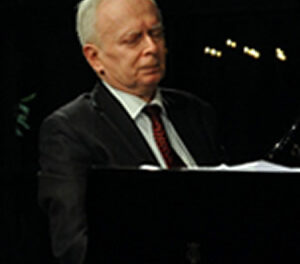In a program featuring two warhorses and one underappreciated gem, the Western Piedmont Symphony under the direction of John Gordon Ross continued its Masterworks series with guest pianist Andreas Klein. The soloist presented Beethoven’s First Piano Concerto, which was sandwiched between two energetic and dramatic works for the orchestra alone.
After the usual quick-step “Star-Spangled Banner,” Maestro Ross led the orchestra through Samuel Coleridge-Taylor’s first Rhapsodic Dance, “The Bamboula,” Op. 75. This composer does not reside in the familiar canon of many concert goers, and the work merits some description. American musical influences may also be discerned in the piece; while Coleridge-Taylor influenced the music scene of early twentieth century America, the composer’s experiences in the United States made a remarkable impression on him as well. The African melody on which the piece is based was also incorporated by the composer-virtuoso, Louis Moreau Gottschalk. This piece features a lilting, dance-like quality, rapid technical passages for strings, frequent heavy use of brass, and dramatic percussion. One of the challenges of performing this work is managing the multiplicity of stop-on-a-dime transitions. Maestro Ross typically handles changes in tempi and style with exceptional facility, and tonight was no exception. The energy brought to the syncopated supportive lines in the strings lent rhythmic precision to the entire ensemble.
The central piece on the program was Beethoven’s Piano Concerto No. 1 in C, Op. 15. The soloist, Andreas Klein, touts an impressive bio with a notable string of international performances and glowing reviews. Given that he focuses on Beethoven and Mozart piano concerti as his signature repertoire, expectations ran high. Unfortunately, several elements of this performance proved lackluster. Klein’s approach to articulation is full of character and delightfully nuanced, which give the phrases and sub phrases of Beethoven’s lines a fresh and appealing personality. In the drier passages of the work, the soloist sparkled. His pedal technique, on the other hand, did not feature the same scrupulous attention to detail. Sadly, much of the lovely clarity demanded by Beethoven’s more transparent passages was muddied. While the tuning of the piano itself and the especially light touch suggested that the instrument was not in the best condition, pianists are always subjected to the weaknesses of the pianos on which they perform, and adaptation is an absolute necessity. The orchestra supported Klein well, but the integration between soloist and accompaniment was better characterized by cooperation than collaboration.
The second half of the program featured Tchaikovsky’s last major work, his Symphony No. 6 in B minor, Op. 74. This piece was a wise programmatic choice that played to the strengths of this ensemble. The lush, singing string sound and dynamic sensitivity complemented Tchaikovsky’s iconic gestures well. Specifically, the large-scale descending lines that the composer favored were brought out nicely in the first movement. Unfortunately, tuning in the woodwinds and brass section, which had been a mild issue in the first piece, continued to be problematic. The second movement is a quirky two plus three “waltz” that somehow escapes the heavy plodding of most pieces written in quintuple meter. The consistent light lilt of the ensemble avoided the laboriousness present in some interpretations. While the third movement was a little too quick for the acoustics of the hall, the fourth movement again displayed the lovely phrase shaping characteristic of this orchestra. The glorious passing tones and somber Andante ending brought the evening to a restful close.











